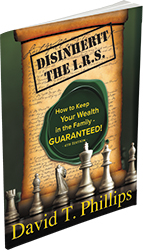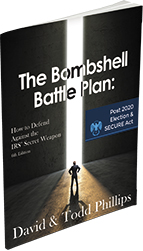
Skousen May 2016

How to Beat the IRS with Your IRA
Speaking of IRAs... Several years ago at a conference at Arizona State University, a former U.S. Treasury official revealed why the federal government isn't concerned about the national debt and the deficit.
He bluntly said, "The treasury isn't that concerned about the deficit because we have 'off-balance sheet assets' that will eventually pay off the deficit. Americans have $18 trillion in 'qualified' savings accounts that will soon be taxed at an average rate of 30% when taken as income. Required Minimum Distributions (RMDs) that start at the age of 70.5 for owners and immediately for non-spousal beneficiaries.
He then explained that investors assume all of the investment risk and are doing a pretty good job of growing the IRS's future tax revenue by making money in their 'qualified' deferred accounts like the IRA, 401(k), 403(b), SEP and Defined Benefit Pension Plans. He went on to emphasize that the IRS has nothing but time and is just waiting for Boomers to start withdrawing their tax deferred savings, so they can tax their beneficiaries.
The audience was speechless. Almost $20 trillion in "qualified accounts" and trillions more in Tax Deferred Annuities, all are just waiting for the tax hammer to hit. Fortunately, the federal estate tax exclusion is now $5.45 million, so most Americans will not have to pay the additional 45% in federal estate taxes, losing up to 80% of their "qualified" money to taxes when inherited by their family, but most will lose at least 30 to 40% in income taxes.
So what are your options? How can you mitigate the tax bite and not run out of money when you retire?
Three Strategies to Survive and Prosper in Your Retirement
I suggest three possible strategies:
1. Invest inside your IRA or other retirement plan in my income-producing stocks (recommended in this issue) that will generate more than enough income to match the annual mandatory withdrawals required by the IRS after age 70½ (anywhere from 3% to 8.77% a year, depending on your age). Then you always will have sufficient funds to survive the retirement years.
2. Consider using the annual taxable RMD income you withdraw from your IRA to buy a joint and survivor life insurance (also known as second to die) policy, preferably one with some cash value building up. You can use this insurance policy to provide tax-free wealth to your children and heirs when you pass away for them to use to pay the taxes on your retirement inheritance. David T. Phillips, my estate planning specialist, calls it the Family Bank Strategy.
3. Take advantage of the so-called Stretch IRA, a technique to maintain your IRA for several years after your death and thus minimize estate taxes. President Obama and others have advocated eliminating the Stretch IRA, but so far it hasn’t happened.
You can learn more details about the last two strategies (the insurance and the Stretch IRA) in a great new book by Dave Phillips called The IRA Required Minimum Distribution Leverage Strategy. Call his office, toll-free 888-892-1102, to order your RMD Leverage Strategy Kit which includes the newly updated book and personalized RMD Leverage Strategy analysis. It’s available to my readers at a 50% discount for just $10.




